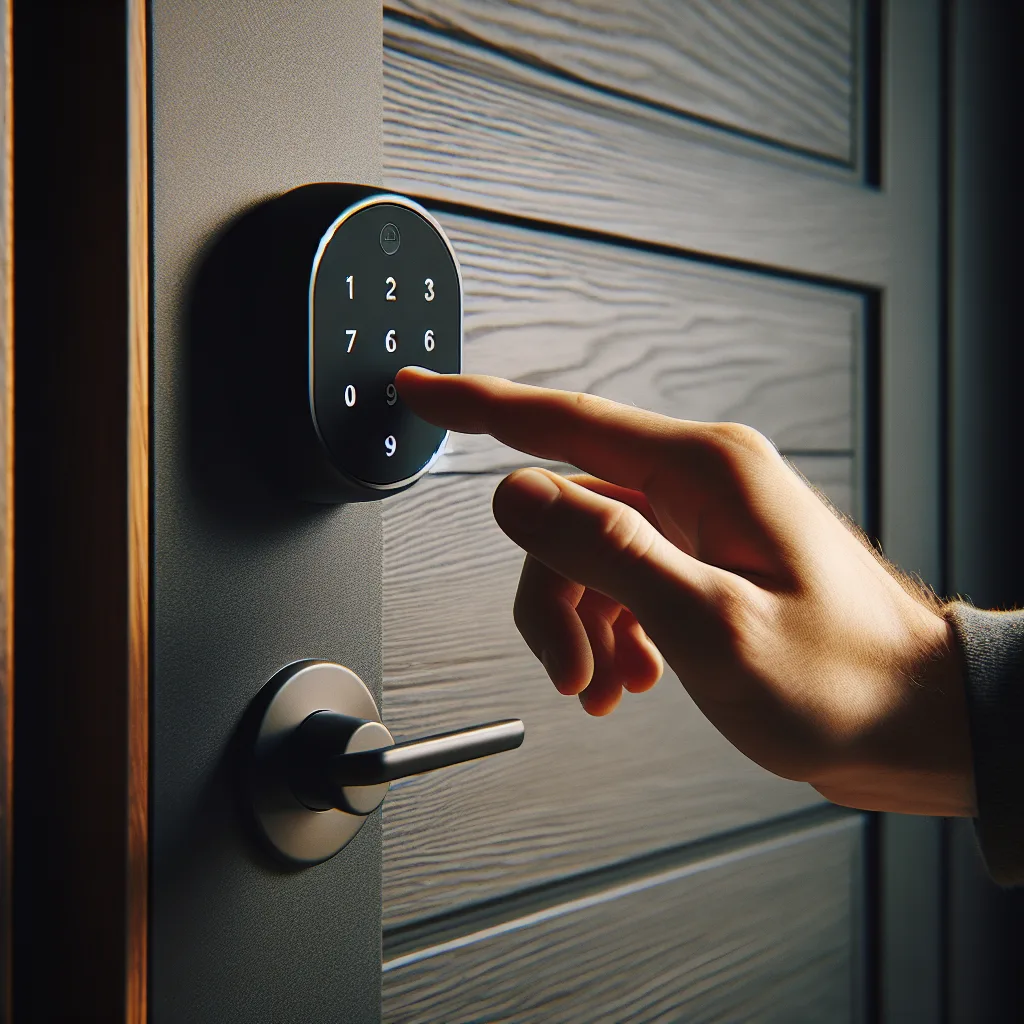Feeling lost in the world of smart locks? Our guide breaks down the options, from full replacements to retrofits, to help you find the perfect lock.
A little while ago, I found myself standing in the home improvement aisle, just staring at a wall of boxes. I was on a mission to change out the locks at my house, and I’d decided to finally step into the 21st century with a smart lock. The only problem? I was completely and utterly overwhelmed.
There are just so many options. Some look like they belong on a spaceship, while others look almost exactly like a regular deadbolt. Some have keypads, some use fingerprints, and some seem to work by magic.
If you’re feeling that same sense of confusion, I get it. It’s a lot to take in. So, let’s grab a virtual coffee and just talk it through. Forget the tech jargon and confusing specs. Let’s figure out what you actually need.
First Off, Why Bother with a Smart Lock?
Before we dive into the what, let’s talk about the why. The most obvious perk is keyless entry, which is fantastic. I can’t tell you how many times I’ve juggled grocery bags while fumbling for my keys. Now, I just punch in a code.
But it’s about more than just convenience. It’s about peace of mind.
- Did I lock the door? You can check from your phone, wherever you are. No more driving halfway to work and having that mini panic attack.
- Who needs access? You can create temporary codes for a dog walker, a contractor, or family visiting from out of town. When they no longer need access, you just delete the code. No more handing out spare keys that can get lost or copied.
- When did the kids get home? Most smart locks have an activity log, so you can see exactly when the door was opened and by which code.
It’s about making your home’s security simpler and more transparent.
The Two Main Paths: Full Replacement vs. Retrofit
When you strip it all down, you’re basically choosing between two main types of smart locks.
1. The Full Replacement Lock
This is exactly what it sounds like. You remove your entire old deadbolt—the whole mechanism, inside and out—and replace it with a brand-new smart one.
These often come with a keypad on the outside, a thumb turn on the inside, and usually a hidden keyhole as a backup. Brands like Schlage and Yale are huge players in this space.
- The upside: It’s a completely new, integrated system. You get a fresh deadbolt that’s designed to work perfectly with the smart components. The installation is a bit more involved, but it’s usually just a screwdriver and about 30 minutes of your time.
- The downside: Because it’s a full replacement, it might not be ideal for renters whose landlords don’t want the original hardware removed.
2. The Retrofit Lock
This option is a bit different and super clever. A retrofit lock, like the popular August smart lock, only replaces the interior part of your deadbolt.
You keep your existing lock, your existing deadbolt, and your existing keys. The smart device just clamps onto the thumb turn on the inside of your door. From the outside, your lock looks exactly the same as it always has.
- The upside: Installation is incredibly simple and fast—we’re talking 10-15 minutes. It’s perfect for renters or anyone who wants to keep their current keys as a backup.
- The downside: It’s a bit bulkier on the inside of your door, and its performance depends on how smooth your existing deadbolt is. If your lock is old and sticky, the motor in the smart lock might struggle.
A Few Key Things to Actually Think About
Okay, you’ve got the two main types down. Now, let’s quickly run through the features that really matter.
- How do you want to unlock it? Beyond a phone app, think about daily use. Do you want a keypad? What about a fingerprint sensor? Some locks even have auto-unlock, which uses your phone’s location to unlock the door as you approach.
- Do you need Wi-Fi? A Bluetooth lock only lets you control it when you’re standing nearby (usually within 30 feet). A Wi-Fi lock lets you control it from anywhere in the world. Some locks have Wi-Fi built-in, while others (like August) may require a small plug-in “bridge” to connect to your home network. My advice? Go for Wi-Fi. The remote access is what makes it truly smart.
- What about the battery? They all run on batteries. Don’t worry, they last for months (sometimes up to a year) and give you plenty of warning when they’re running low. Most keypad models also have two little terminals on the bottom where you can touch a 9V battery for emergency power if you get locked out.
- Do you need a key backup? Personally, I say yes. Technology is great, but having a physical key hidden somewhere safe provides the ultimate backup plan for any situation.
So, What’s the “Best” Smart Lock?
Here’s the honest answer: the best one is the one that fits your life.
Don’t get caught up in having the most features. Think about your front door. Are you a renter? A retrofit lock is probably your best bet. Do you own your home and want a seamless, all-in-one unit? Go for a full replacement. Do you hate carrying anything? Look for one with a great keypad or fingerprint reader.
Choosing a smart lock is a small home improvement project that makes a huge difference in your daily routine. You’ve got this.
